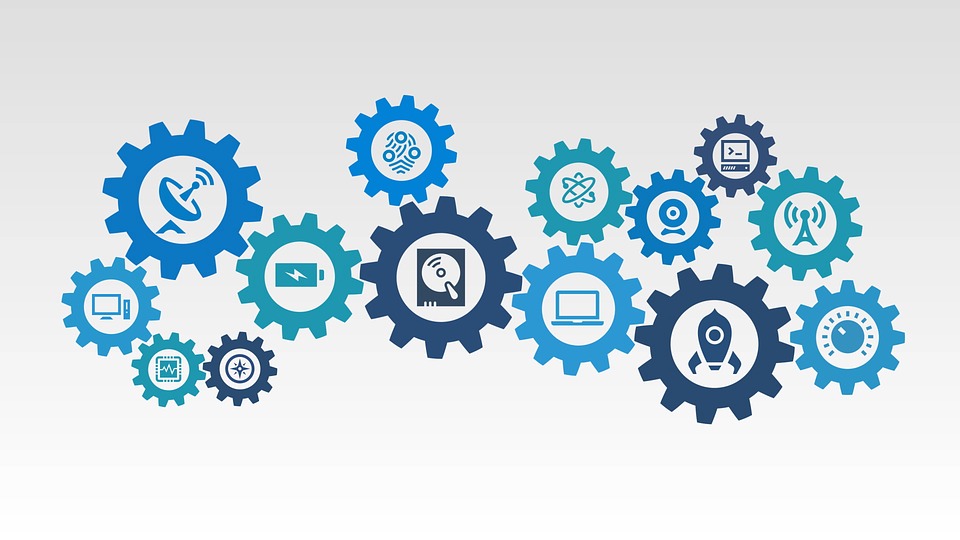Exploring AI Undress GitHub: Ethics, Technology, And What It Means
The digital landscape, it seems, is always shifting, and with it, the capabilities of artificial intelligence are growing at a truly rapid pace. What was once thought of as something from science fiction, like AI that can alter images in surprising ways, is now, in 2025, quite real. Tools that can, for instance, digitally remove clothing from pictures, often called "undress AI," have become a functioning reality, and this has sparked a lot of discussion, you know, about what's possible and what's right.
This sort of AI, which is, like, a service that says it can make fake pictures of people without their clothes using clever computer programs, has certainly caught a lot of eyes. Some of these tools, it turns out, are making their way onto public platforms, with projects connected to "ai undress github" appearing for those who want to look into how they work or, perhaps, even try to contribute to their making. It's a rather interesting development, to say the least.
So, in this piece, we're going to look closely at "ai undress github," getting into what these tools are all about, how they function, and, perhaps more importantly, the really big questions they bring up regarding privacy, proper use, and the wider world of AI. We'll also, you know, think about what it means for everyone, from those who make these programs to those who might come across them.
Table of Contents
- Understanding "Undress AI" Technology
- Ethical and Societal Implications
- The Broader AI Landscape
- Navigating the Digital Future
- Frequently Asked Questions
- Conclusion
Understanding "Undress AI" Technology
When we talk about "undress AI," we're essentially looking at a specific kind of generative artificial intelligence. This technology, you know, has gained a lot of attention lately because of its ability to change pictures in surprising ways. It's pretty much a digital tool that can alter images by taking away clothing, giving people a way to see what generative AI can actually do.
How It Works
These applications, so it seems, use really clever artificial intelligence and deep learning methods. They're built on advanced AI algorithms that work to digitally change images, making them appear as if clothing has been taken off. For instance, some of the better choices for getting realistic results and removing clothes securely, like undress.app and undress.cc, combine this advanced AI with a simple way to use them.
The core idea behind these tools often comes from earlier work, like the "deepnude" algorithm, which has seen various versions and improvements. These AI clothes remover tools, as they're often called, have become quite well-known in recent years because of their surprising image manipulation abilities. They really do show how far generative AI has come, in some respects.
The GitHub Connection
The open-source nature of much software development means that projects related to "undress AI" can, and sometimes do, show up on platforms like GitHub. You might find, for example, contributions to projects like "leungwn/easydeepnude" or "undress/demo_app" or even "sukebenet/dreampower" there. These are often, like, places where people can work together on different versions of these tools, sometimes including both command-line and graphical ways to use them.
This presence on GitHub means that the underlying methods and even some versions of these tools are, in a way, available for people to look at and, perhaps, even build upon. It's a place where developers can share their work, and, you know, this makes the technology itself more visible. The availability of such code also highlights the ongoing discussion about how AI models should be shared and used.
Ethical and Societal Implications
The rise of "undress AI" tools, particularly those found or discussed on platforms like GitHub, brings with it some very serious questions about ethics and how they affect society. These are not just, you know, technical puzzles; they are deeply human concerns that touch on privacy and personal safety. It's really something we need to think about carefully.
Privacy Concerns
One of the biggest worries, arguably, is the severe invasion of privacy these tools allow. The idea that an AI service claims it can make fake nude pictures of people using its algorithms is, frankly, quite disturbing. It means that images of individuals could be altered without their permission, leading to situations that are very upsetting and potentially harmful.
This kind of image manipulation, you know, directly goes against a person's right to control their own image and how it's used. It creates a situation where trust can be broken, and individuals might feel, quite understandably, that their personal boundaries have been violated. It's a clear example of how technology, even when seemingly just "code," can have very real-world impacts on people's lives.
Misuse and Harms
The potential for these tools to be misused is, you know, a very real and present danger. Whether someone wants to remove clothes from a picture of a friend, a classmate, a neighbor, or even a public figure, these AI tools make it possible to create fake images that can be used to harass, embarrass, or exploit others. This sort of activity can cause deep emotional distress and damage reputations.
It's important to remember that creating and sharing such altered images without consent is, in many places, against the law and is always a serious ethical problem. The ease of access to some of these tools, like the "11 best free undress AI apps" mentioned, means that the harm they can cause is, unfortunately, quite widespread. This is not just a technical curiosity; it's a social challenge.
The Call for Wisdom in AI
Given these concerns, there's a strong call for AI to be developed with a lot of thought and good judgment. Ben Vinson III, who is the president of Howard University, made a very strong point about this, saying that AI should be "developed with wisdom." This idea was part of a talk he gave at MIT, and it really hits home, you know, when we look at tools like "undress AI."
Developing AI with wisdom means thinking about the possible harms and making choices that put people's well-being first. It's about more than just making the technology work; it's about making sure it serves humanity in a way that is helpful and respectful, not harmful. This is a challenge for everyone involved in making and using AI, apparently.
The Broader AI Landscape
The discussion around "ai undress github" isn't just about one type of tool; it's part of a much bigger conversation about generative AI and its place in our world. AI is, you know, changing so many things, and understanding its wider effects is pretty important.
Generative AI's Dual Nature
Generative AI, the kind that can create new content like images or text, has both amazing potential and some serious downsides. For example, MIT news looks into what generative AI technologies and applications mean for the environment and for how sustainable things are. This shows that even seemingly harmless uses of AI can have wider impacts, you know, beyond what we first see.
So, while generative AI can help with creative projects or solve complex problems, it also raises questions about its footprint and how it might be used in ways that are not so good. It's a bit of a double-edged sword, really, offering both great promise and some things to worry about. This dual nature is something we need to, like, keep in mind.
Reliable AI Development
Making AI that works well and can be trusted is, arguably, a big goal for researchers. For instance, researchers at MIT have come up with a good way to train more dependable reinforcement learning models. They're focusing on tasks that are tricky and have a lot of changes, which is pretty useful for making AI that doesn't mess up. This kind of work is very important for all AI, including the kind that does image manipulation.
If AI models are not reliable, they can introduce hidden failures, which can be a real problem, especially with sensitive applications. So, making sure AI is built in a way that is steady and predictable is, you know, a key part of responsible development. It's about building trust in the technology itself, basically.
Focus on Creativity and Ethics
Some experts believe that if AI can take on the repetitive or less exciting parts of a job without causing unexpected problems, it could free up people to do more creative, strategic, and ethical work. Gu, a researcher, suggests that an AI that can handle the "grunt work" would allow developers to focus on the bigger picture, like being more imaginative and thinking about what's right. This perspective, you know, is pretty important when we think about how AI should fit into our lives.
It means that instead of just making tools that can do anything, we should, perhaps, guide AI development towards things that truly help people and uphold good values. This is a call to, like, make sure that the human element, particularly our creativity and our sense of right and wrong, remains at the forefront of technological progress. You can learn more about the broader implications of generative AI, too it's almost, a really big topic.
Navigating the Digital Future
As AI continues to grow and, you know, become more integrated into our lives, knowing how to deal with tools like those found under "ai undress github" becomes very important. It's about understanding our roles, both as those who create and those who use technology.
Developer Responsibility
Those who build AI models and applications have a big responsibility. They need to think about the potential for harm that their creations might cause, especially when dealing with sensitive areas like image manipulation. It's not just about whether something can be built, but whether it should be, and how it might be used by others. This is, you know, a pretty serious consideration for anyone writing code.
Developers could, for example, put safeguards in place or choose not to release tools that are likely to be misused. They might also work on making AI more reliable, as MIT researchers are doing, so that it doesn't cause unintended problems. It's about, like, building with a conscience, basically.
User Awareness
For everyone else, being aware of what AI can do, and the risks involved, is pretty key. Knowing that tools like "undress AI" exist and understanding their potential for misuse can help people protect themselves and others. It's about being, you know, smart about what you see online and what you share.
People should also be careful about which apps they use, like avoiding "sketchy apps" or "fake 'free' tools" that might not be secure or could be used for bad purposes. It's important to, like, question what you encounter and to understand that not everything you see or hear online is real. You can learn more about AI ethics on our site, and also find information on digital privacy right here.
Frequently Asked Questions
Here are some common questions people often ask about "undress AI" and related topics:
Is "undress AI" legal to use?
The legality of using "undress AI" tools, especially to create altered images of individuals without their consent, varies by location, but it's often against the law. Creating and sharing such images can lead to serious legal trouble, so it's really something to be very careful about.
How does "undress AI" actually work?
These tools use advanced AI algorithms, often based on deep learning, to analyze an image and then generate a new version where clothing appears to be removed. They essentially, you know, fill in the "missing" parts based on patterns they've learned from lots of data. It's a kind of image manipulation, apparently.
What are the ethical concerns surrounding "ai undress github" projects?
The main ethical concerns include severe privacy violations, the potential for harassment and exploitation, and the creation of non-consensual fake images. There's a big worry, you know, about the misuse of this technology to harm individuals and spread misinformation.
Conclusion
The presence of "ai undress github" projects highlights the complex and often challenging aspects of generative AI. We've seen how these tools work, the serious privacy and ethical issues they bring up, and how they fit into the wider world of AI development. It's pretty clear that as AI keeps growing, we all need to be thoughtful about how it's made and used. Let's encourage responsible AI creation and use, you know, for a safer digital space.

BIBLIOTECA EPB: Celebracións do Día da paz

AI driven analysis of PD-L1 lung cancer in Southampton

OpenAI Codex CLI: 터미널에서 만나는 AI 코딩 에이전트